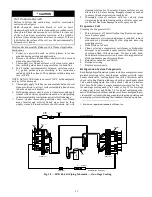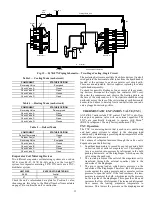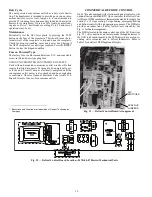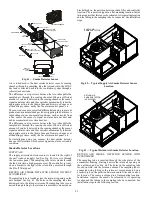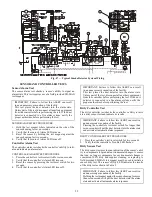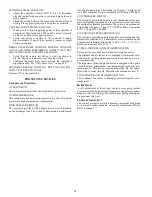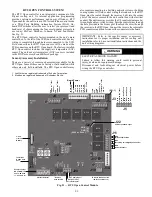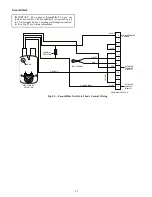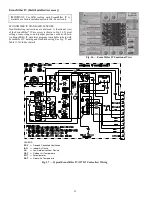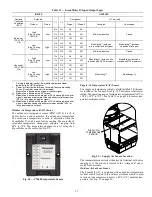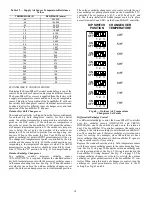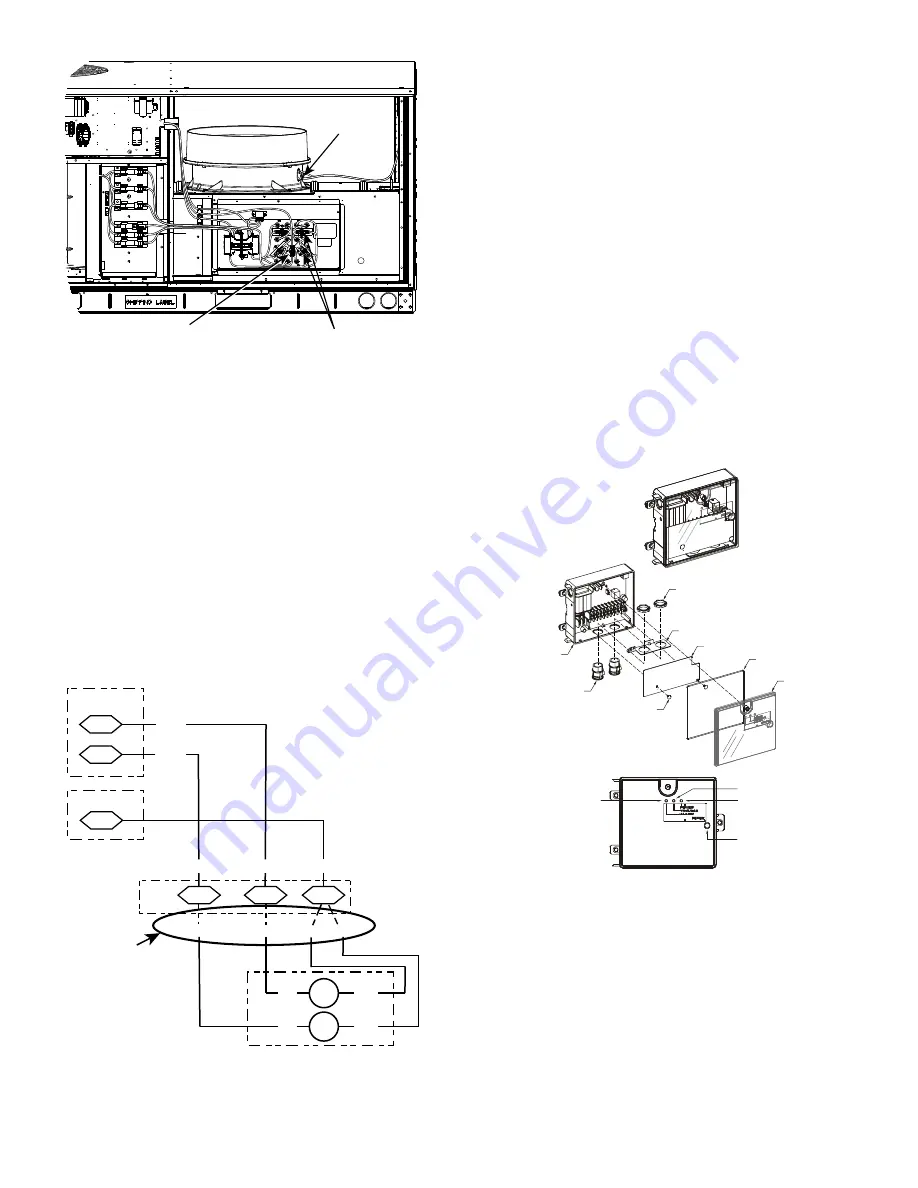
22
Fig. 38 — Typical Location of Heater Limit Switches
(3
-
phase heater shown)
Completing Heater Installation
FIELD POWER CONNECTIONS
Tap conductors must be installed between the base unit’s field
power connection lugs and the single point box (with or with
-
out fuses). See Fig. 39. Refer to unit wiring schematic. Use
copper wire only. For connection using the single point box
without fuses, connect the field power supply conductors to the
heater power leads and the field-supplied tap conductors inside
the single point box. Use UL-approved pressure connectors
(field-supplied) for these splice joints.
LOW-VOLTAGE CONTROL CONNECTIONS
Pull the low-voltage control leads from the heater module(s) —
ORN, VIO and BRN — to the 4-pole terminal board TB4 lo
-
cated on the heater bulkhead to the left of heater 1. Connect the
ORN lead to terminal TB4-1. Connect the VIO lead to terminal
TB4-2. Connect the BRN lead to terminal TB4-3. See Fig. 39.
T
Fig. 39 — Accessory Electric Heater Control Connections
SMOKE DETECTORS
Smoke detectors are available as factory-installed options on
547K models. Smoke detectors may be specified for supply air
only, for return air without or with economizer, or in combina
-
tion of supply air and return air. Return air smoke detectors are
arranged for vertical return configurations only. All compo
-
nents necessary for operation are factory-provided and mount
-
ed. The unit is factory-configured for immediate smoke detec
-
tor shutdown operation; additional wiring or modifications to
unit terminal board may be necessary to complete the unit and
smoke detector configuration to meet project requirements.
System
The smoke detector system consists of a four-wire controller and
one or two sensors. Its primary function is to shut down the roof
-
top unit in order to prevent smoke from circulating throughout
the building. It is not to be used as a life saving device.
Controller
The controller (see Fig. 40) includes a controller housing, a
printed circuit board, and a clear plastic cover. The controller
can be connected to one or two compatible duct smoke sensors.
The clear plastic cover is secured to the housing with a single
captive screw for easy access to the wiring terminals. The con
-
troller has three LEDs (for Power, Trouble and Alarm) and a
manual test/reset button (on the cover face).
Fig. 40 — Controller Assembly
Smoke Detector Sensor
The smoke detector sensor (see Fig. 41) includes a plastic
housing, a printed circuit board, a clear plastic cover, a sam
-
pling tube inlet and an exhaust tube. The sampling tube (when
used) and exhaust tube are attached during installation. The
sampling tube varies in length depending on the size of the
rooftop unit. The clear plastic cover permits visual inspections
without having to disassemble the sensor. The cover attaches to
the sensor housing using four captive screws and forms an air
-
tight chamber around the sensing electronics. Each sensor in
-
cludes a harness with an RJ45 terminal for connecting to the
controller. Each sensor has four LEDs (for Power, Trouble,
Alarm and Dirty) and a manual test/reset button (on the left-
side of the housing).
CONTROL SIDE
AUTOMATIC RESET
LIMIT SWITCHES
STATOR MANUAL
RESET LIMIT
SWITCH
LINE BREAK
"ONE SHOT"
LIMIT SWITCHES
VIO
HR1
BRN
UCB
Field
Connections
HR1: Heater Circuit 1
HR2: Heater Circuit 2
(if two-circuit module installed)
2
3
C
1
3
PNK
ORN
ORN
PNK
BRN
VIO
BRN BRN
VIO
2
TB4
VIO
HR2
BRN
Elec Htr
TRAN 1
DUCT SMOKE SENSOR
CONTROLLER
CONDUIT NUT
S
(
S
UPPLIED BY IN
S
TALLER)
CONDUIT
S
UPPORT PLATE
TERMINAL BLOCK COVER
COVER GA
S
KET
(ORDERING OPTION)
CONTROLLER
COVER
FA
S
TENER (2X)
CONDUIT COUPLING
S
(
S
UPPLIED BY IN
S
TALLER)
CONTROLLER HOU
S
ING
AND ELECTRONIC
S
ALARM
TROUBLE
POWER
TE
S
T/RE
S
ET
S
WITCH




